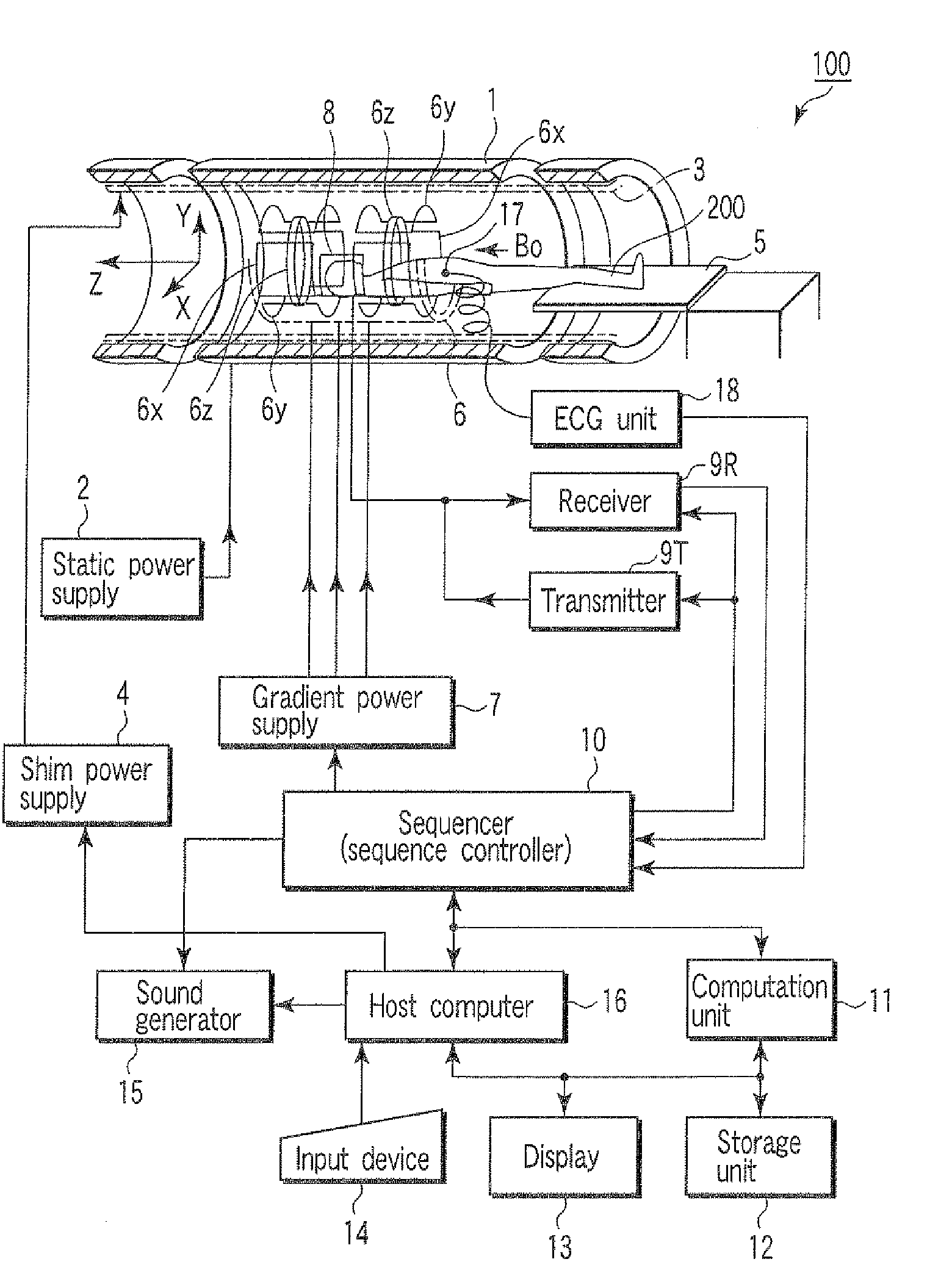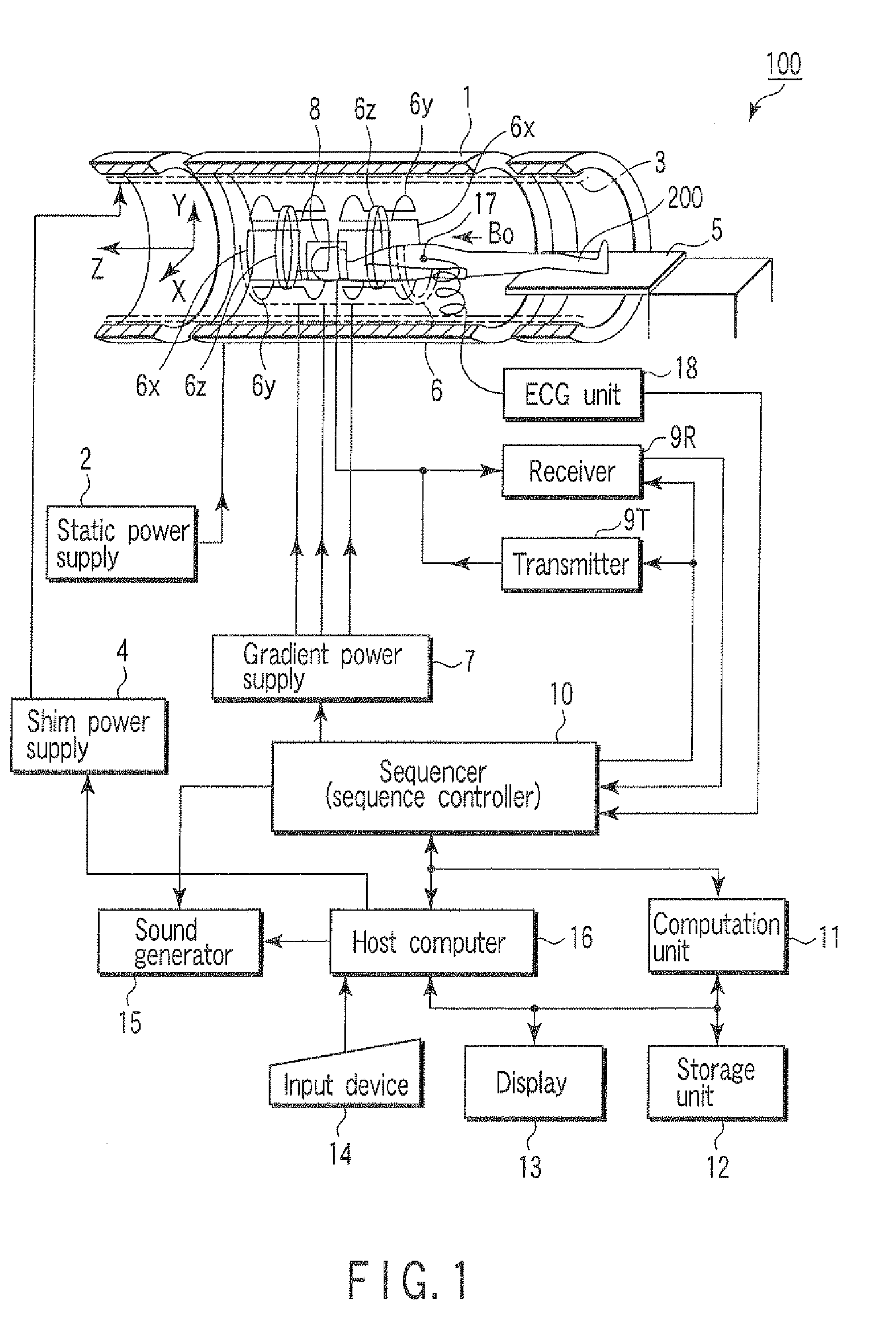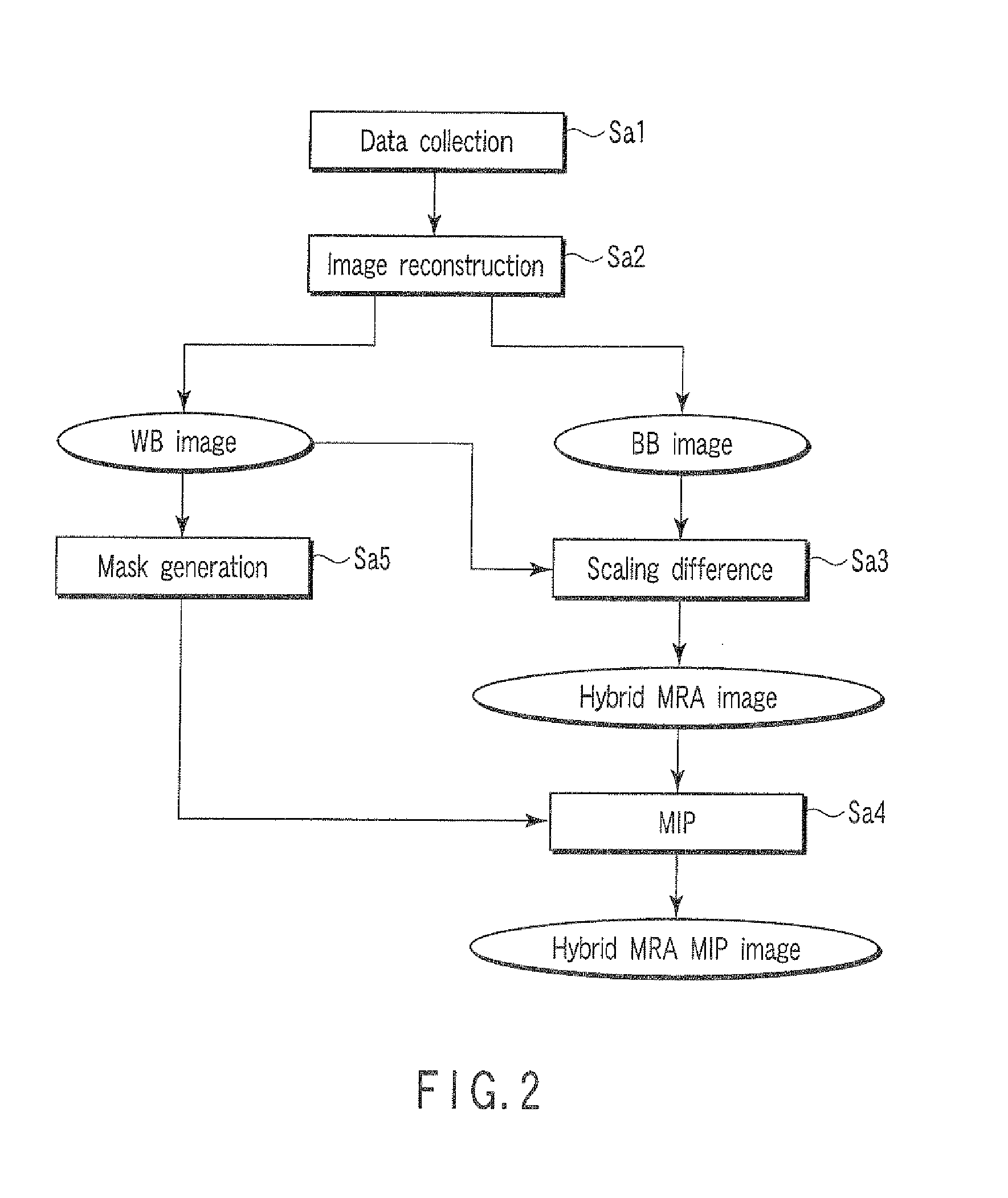Magnetic resonance imaging apparatus
a magnetic resonance imaging and apparatus technology, applied in the field of magnetic resonance imaging apparatus, can solve the problems of difficult visualization of turbulent parts, inconvenient use, and difficulty in visualizing peripheral blood vessels such as perforating branches, and achieve the effects of reducing signal intensity, high signal intensity, and low signal intensity
- Summary
- Abstract
- Description
- Claims
- Application Information
AI Technical Summary
Benefits of technology
Problems solved by technology
Method used
Image
Examples
first embodiment
[0065]The operation of the MRI apparatus 100 configured as described above in a first embodiment will next be described. It is to be noted that the MRI apparatus 100 can perform various kinds of imaging achieved by existing MRI apparatuses, which is, however, not described. Here, an operation in the case of obtaining hybrid MRA is explained.
[0066]FIG. 2 is a flowchart showing a procedure for operating the MRI apparatus 100 when the hybrid MRA is obtained.
[0067]In step Sa1, the sequencer 10 controls the gradient power supply 7, the transmitter 9T and the receiver 9R to collect data in both a WB method and a BB method. The data collection in the WB method and the data collection in the BB method may be carried out in separate sequences, but a multi-echo method is used here to carry out the data collection in both the NB method and the BB method in a series of sequences. The data collection is carried out for each of a plurality of slices in a slab set as an imaging region.
[0068]It is ...
second embodiment
[0125]The operation of the MRI apparatus 100 in a second embodiment will next be described.
[0126](A) Theoretical Preparation
[0127]As a theoretical preparation before the description of the specific operation, there are defined an MR signal model of a voxel with uneven magnetic susceptibility and with a flow, and rephase / dephase signal models.
[0128](A-1) MR Signal Model of Voxel with Uneven Magnetic Susceptibility and with Flow
[0129]First, parameters regarding the MR signal model of a voxel with uneven magnetic susceptibility and with a flow are defined as follows:
[0130]M0: Proton density
[0131]AT1: T1 dependent attenuation
AT1=1−exp(−TR / T1)
[0132]AT2: T2 dependent attenuation
AT2=exp(−TE / T2)
[0133]AD: Diffusion dependent attenuation
AD=exp(−bD)
[0134]Asus: Susceptibility dependent attenuation
Asusexp[−TE(γΔB0σ)]*
[0135]Φsus: Susceptibility dependent phase
sus=−TE(γΔB0m)
[0136]However, in the case of Lorenzian model
[0137]T2*: Relaxation time including T2 and a component generated by a suscepti...
PUM
 Login to View More
Login to View More Abstract
Description
Claims
Application Information
 Login to View More
Login to View More - R&D
- Intellectual Property
- Life Sciences
- Materials
- Tech Scout
- Unparalleled Data Quality
- Higher Quality Content
- 60% Fewer Hallucinations
Browse by: Latest US Patents, China's latest patents, Technical Efficacy Thesaurus, Application Domain, Technology Topic, Popular Technical Reports.
© 2025 PatSnap. All rights reserved.Legal|Privacy policy|Modern Slavery Act Transparency Statement|Sitemap|About US| Contact US: help@patsnap.com



